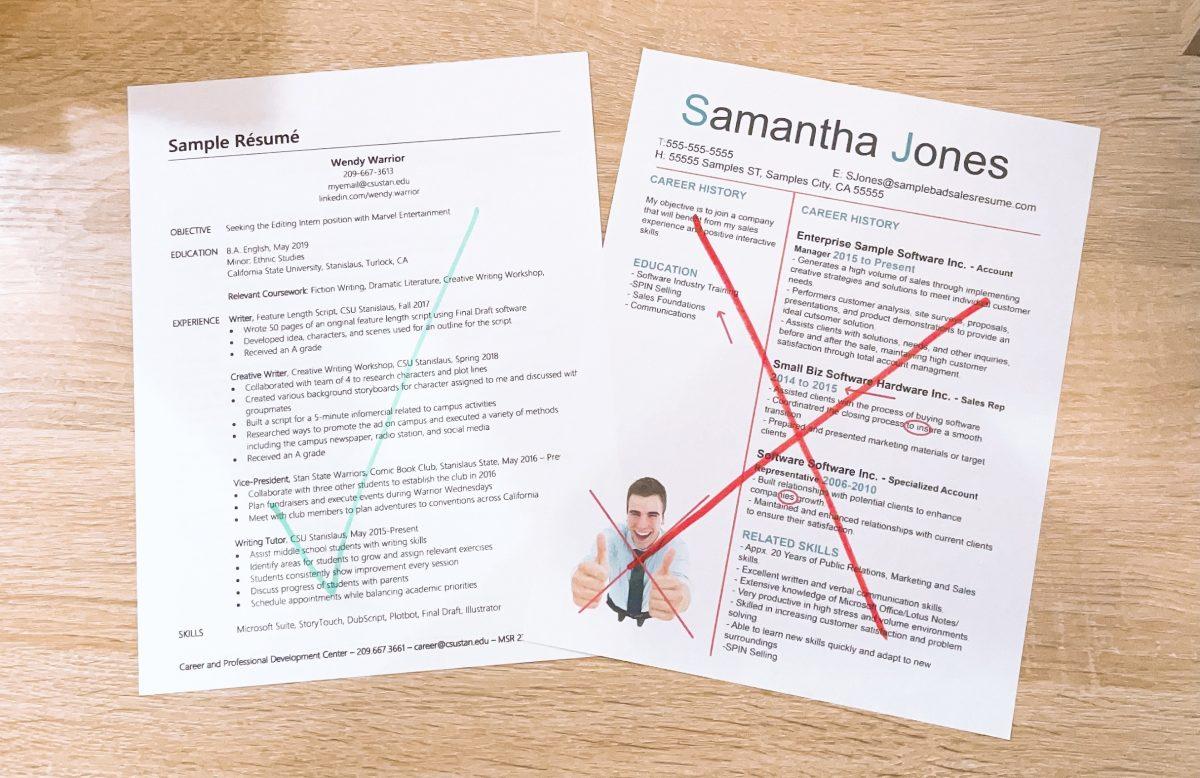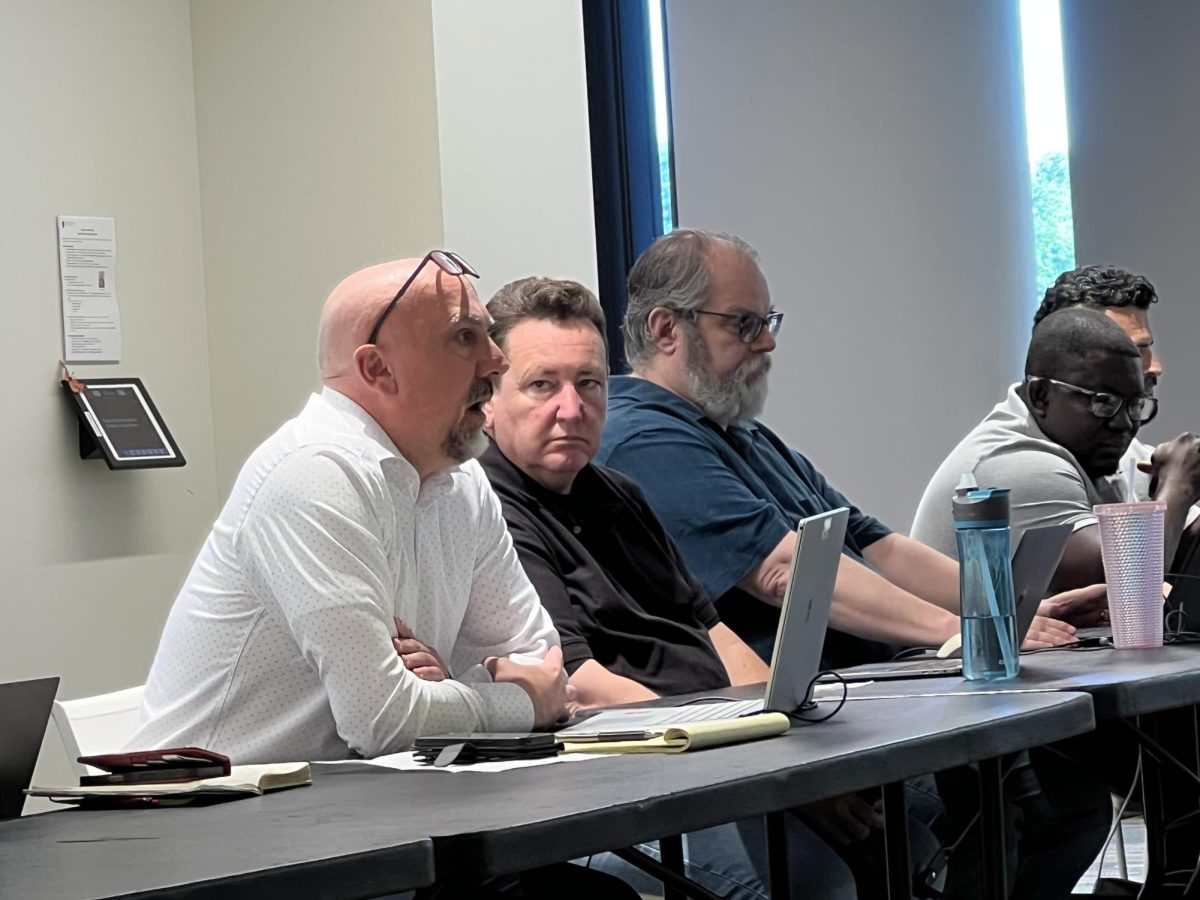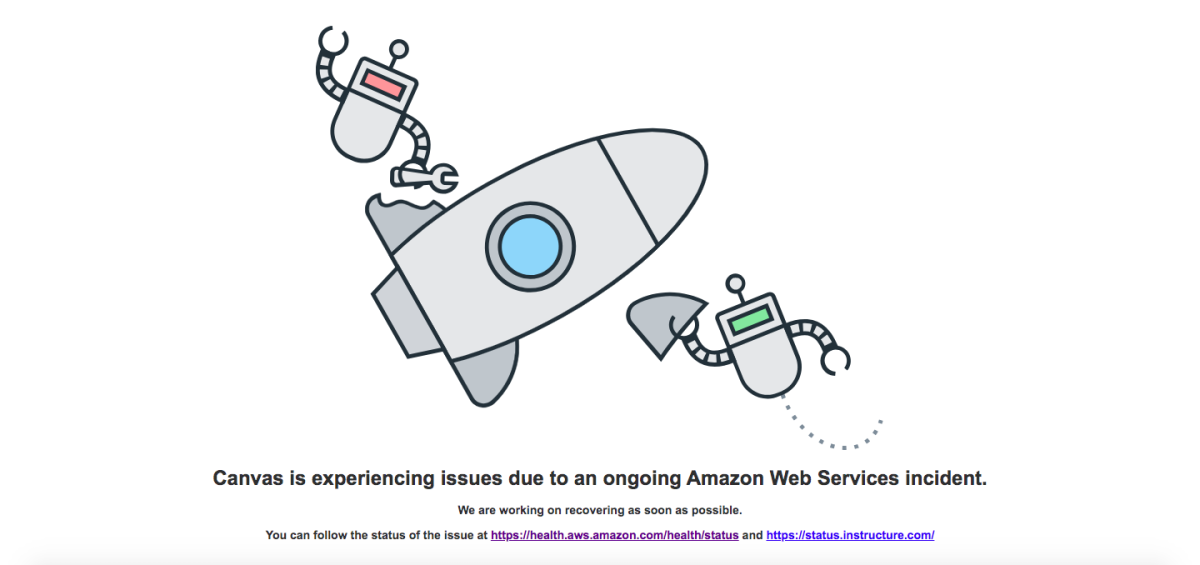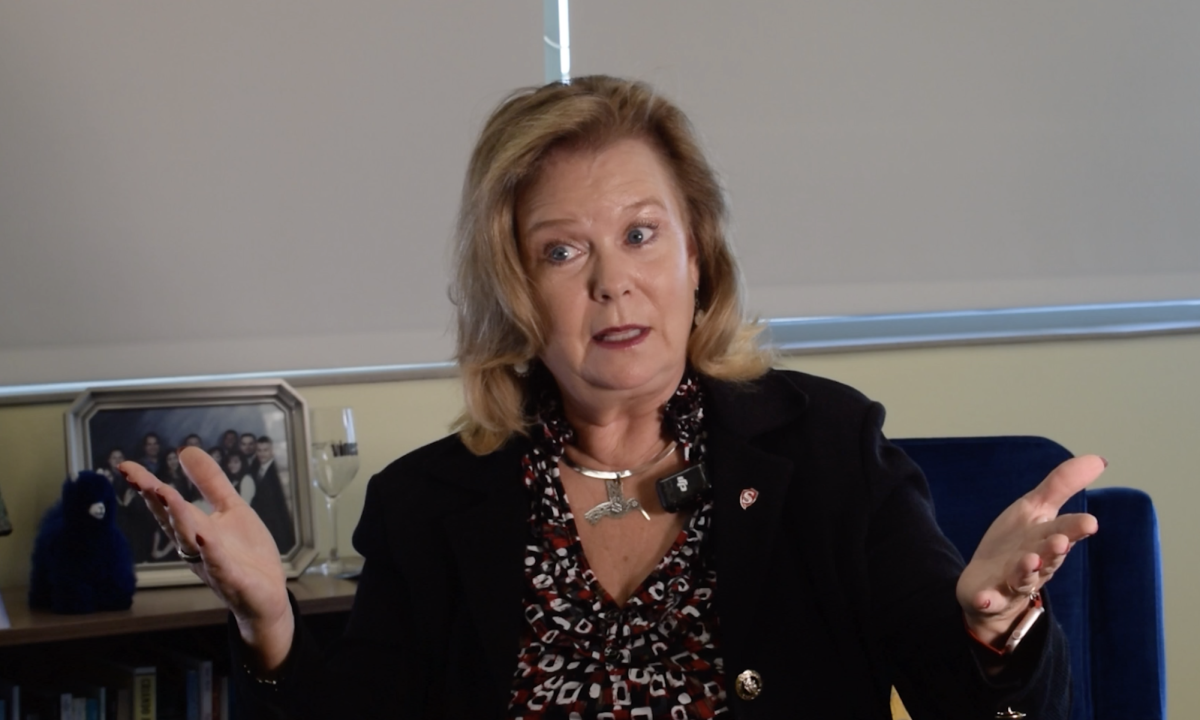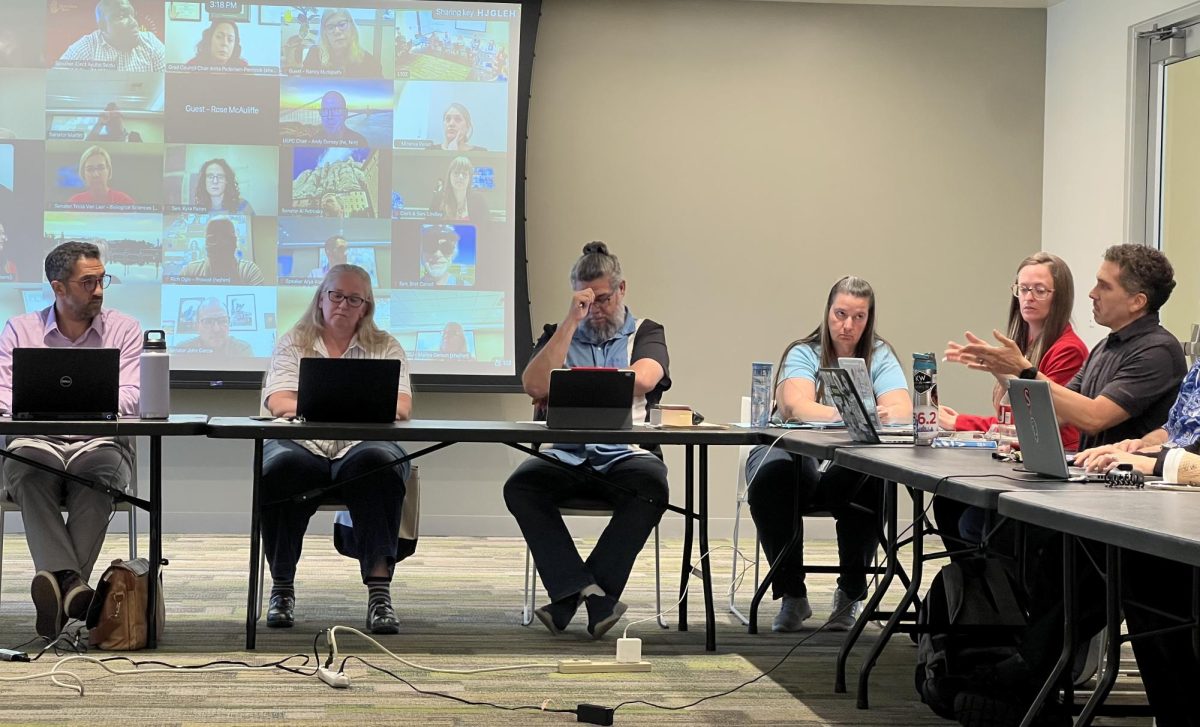On February 16, career coach Nang Thao hosted an online workshop for the Stan State community that focused on improving a person’s resume. Thao touched upon a variety of topics surrounding resumes, including their purpose, different sections that should be included, how they should be structured and much more.
Thao’s own experience with resumes started after she graduated from Stan State in 2008. Thao worked two jobs while working towards her bachelor’s degree in Sociology and Human Services, but neither of these jobs required a resume, so she had to learn how to write a resume by asking for help.
Thao reached out to a faculty member at Stan State and they were able to help her improve the resume that she already had. Because of this, Thao stated she “would just like to remind students that we’re here, the Career Center, we’re here to assist. Ask for help, and don’t be afraid to ask for help and be open to having that conversion of ‘How do [I do] this? Am I doing this right?,’ and be open to constructive feedback at the same time.”
Thao started the workshop by debunking a common belief about resumes. Some people believe that if they have a great resume, they will get hired. This isn’t entirely true, because the purpose of a resume is for it to be used as a marketing tool. A resume can only show an employer that a person is qualified for that job. Whether that person gets hired or not is entirely up to the person and the employer.
Throughout the workshop, Thao explained how a resume should be structured. She stated that it should be around one to two pages long, and it should be limited to a person’s last ten years of experience. However, if a person feels like an older job is more relevant to the job that they are applying for, they can definitely include that experience. Most resumes are organized in chronological order, with the newest job experience at the top and the oldest at the bottom.
A resume’s voice matters and Thao stated that a person should write their resume in absent first person. This means that they should drops words such as ‘I, me, and my’. Using these types of words can come off as passive and may lead the employer to believe the person may not feel confident about their previous job. Instead, Thao suggests using dynamic words such as led, researched, marketed, coordinated, or designed when describing their job tasks.
There are many sections that a resume can have but, this all depends on relevancy. A person can include their education on their resume if that information is needed to get hired at that job. This works the same for a person’s coursework or projects.
If they are in college, it is best to remove a high school degree off of a resume because an employer will understand that they already graduated from high school. The only educational information that should be included is an estimated graduation date. Employers prefer a graduation date because this gives them an idea of whether it would be a good time to hire someone or not.
A person’s skill should also be included in a resume, but this needs to be tailored for the job. Thao suggests looking at a job description and trying to incorporate that into a resume. This will increase the chances of a person’s resume actually getting seen.
Awards should be included in a resume because they show an employer a person’s accomplishments. For example, if someone gets employee of the month, they should include that information because it will show the employer that the person’s previous employer valued them.
One common misconception about resumes is that they should look really fancy. Thao recommends against this for a number of reasons. Items such as graphs, charts, or icons take up too much space and that space could be filled with information that an employer actually wants to see. Thao mentioned that employers tend to look at resumes for an average of 6 seconds. If a resume is filled with graphics, the employer won’t learn much about the applicant.
Thao suggests that people avoid using fill-in templates. Apart from many of these templates being filled with graphics, another reason to avoid templates is that many times these resumes are not compatible with online application services. For example, if a template has two or three columns, the application system will miss a lot of information because it cannot process the information correctly.
Another reason to avoid fill-in templates is because they may come off as lazy. Employers may notice if various people have the same template, and this might suggest that a person is not willing to put in more work to make their resume unique. An informative resume will impress an employer more than a flashy one.
Something to keep in mind when creating your resume is the Applicant Tracking System. This is a software that companies use to review resumes. This software goes through all of the resumes that the company receives and compares a person’s resume to the job description. If there are not enough qualifications on a person’s resume, it can be thrown out before it even reaches an employer’s hands.
Thao recommends that people keep a master resume and that they update it regularly. On that master resume, a person should identify all positions that they are interested in, as well as identifying key skills that pertain to them. The master resume will help a person create more tailored resumes for different jobs.
Many college students attend school with dreams of working in the career of their choice. Unfortunately, with college expenses many students don’t have the financial stability to focus only in school, so many of them search for part-time jobs to help fund their education.
Evelyn Ramos, Associate Director of the Career and Professional Development Center, described these jobs as ‘survival jobs.’ Ramos explained that when it comes to resumes for these types of jobs, a person needs to show that they are intentional about that job.
For a part-time job, Ramos recommends only showcasing skills that are relevant to that job. This includes information such as previous jobs, previous awards granted at those jobs, specific skills and so on. Academic accomplishments are impressive, but Ramos does not suggest including this because an employer may think that the job seeker is not going to be committed to the job. Instead, Ramos suggests saving this information for professional jobs.
Once a person is ready to search for jobs in their career field, the opposite may be true. Ramos does not suggest making previous part-time jobs the main focus of a resume for a professional job because this does not show their expertise in the field.
“Get started with something. Put your experience on paper, whether it’s paid or unpaid. Don’t worry so much about formatting… Just write something down and bring it to us [the Career Center] to get feedback. We’ll help you review it,” explained Ramos.
Dr. April Oquenda is a professor at Stanislaus State who teaches in the English and Business department. Oquenda has an extensive career history. Previously working at CSU San Marcos, she currently operates a small business at Castro Valley Yoga and is president of the Hayward School Board.
During college, Oquenda held various positions in customer service such as retail jobs, babysitting, and serving in a restaurant. To build up her resume, Oquenda received help in the form of a fellow student’s mother who happened to work in the business department.
“[I] asked if she would be willing to meet with me and just kind of coach me on what I should do for…applying for ‘a real job.’ I’d only done those side jobs to pay my rent. She helped me build a resume and she told me to just get an entry level job until I could get a couple of years of experience,” explained Oquenda.
Oquenda also suggests that job seekers looking to join entry level jobs should “pick something that they already like because if you work hard, you’re going to get promoted.”
For further help and information regarding resumes and careers, you can visit the Resume Resources page. Here you can create appointments to speak with a career coach, find future resume workshops, resources and examples.
Categories:
Tips to Create the Best Resume Possible
Guadalupe Aleman
•
February 18, 2021
An example of what a good resume looks like versus a resume that needs work. (Signal photo/ Guadalupe Aleman).
0
Donate to Signal
Your donation will support the student journalists of California State University, Stanislaus. Your contribution will allow us to purchase equipment and cover our annual website hosting costs.
More to Discover

